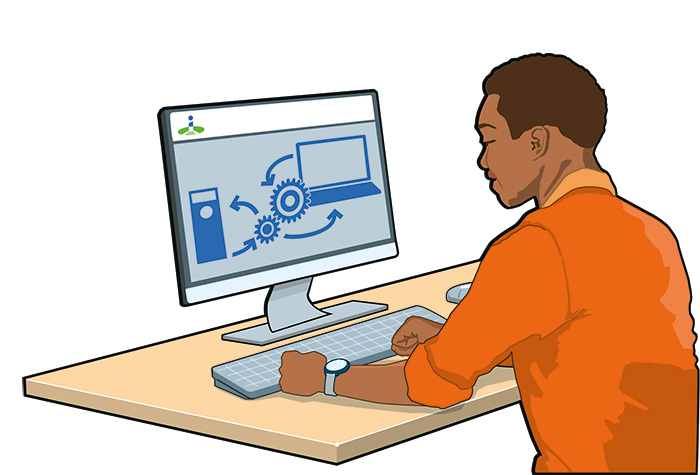What is an integration platform
More and more systems are coming. Businesses and consumers are using more and more applications.
With this growth comes new problems. There is usually some overlap in usage.
A company usually has customers. The data of these customers is often required for multiple applications.
From the perspective of i-Reserve, we can easily explain this with an example.
A company has a customer system (CRM) and works with online reservations.
In addition, the reservations are paid via a payment provider, the invoices are transferred to a cloud application for financial administration and the employees of the company want to keep their personal agenda in a cloud agenda.
In this example we already count 5 systems/applications (CRM, reservation system, payment provider, financial administration and agenda).
So data back and forth.
Traditionally, links between different systems are developed. However, making connections is a time-consuming and therefore expensive process.
This should be simpler and can also be done via integration platforms. An integration platform is in fact a service in itself.
It is the glue between the applications. It allows for data exchange in a generic way.
Incoming and outgoing links are created only once and the platform takes care of these again with other applications.
Where in a traditional development process with multiple applications, the process had to be completed, now it is sufficient to link to the platform once.
Triggers
A commonly used term is a trigger. Something is happening in the application. A customer registers or changes his/her address. That's a trigger.
A trigger ensures that something happens with this data and sends a signal to the integration platform.
They can then do something with it. Usually perform an action.
Actions
An action is the reverse of a trigger. An action is requested from the platform.
For example, the platform calls the action "Create customer". And include the name and email address of this customer.
The platform will then receive a customer number or customer ID back.
Mapping - fields
There is a difference in fields between the triggers and actions. And this is the area where the integration platform plays a strong role.
Fields must be linked to other fields. This is usually done by a mapping (link) from one field to another.
Example: a reservation is converted to an agenda item. In the agenda there is only an option to display a title and description. One user preferred to fill the title with the description of the product of the reservation. The other user prefers to see the contact's name.
Connecting - building blocks
Ultimately, it is a user of the integration platform that provides the link between two systems.
Both the source system and the target system don't "know" much about the link. They only provide the building blocks triggers and actions.
In the intermediate layer - ie in the platform - data is linked together, possibly adjusted and forwarded.
In its simplest form, a link consists of a trigger and an action. But more complex steps such as filters, data manipulation and logic in the link are possible.





